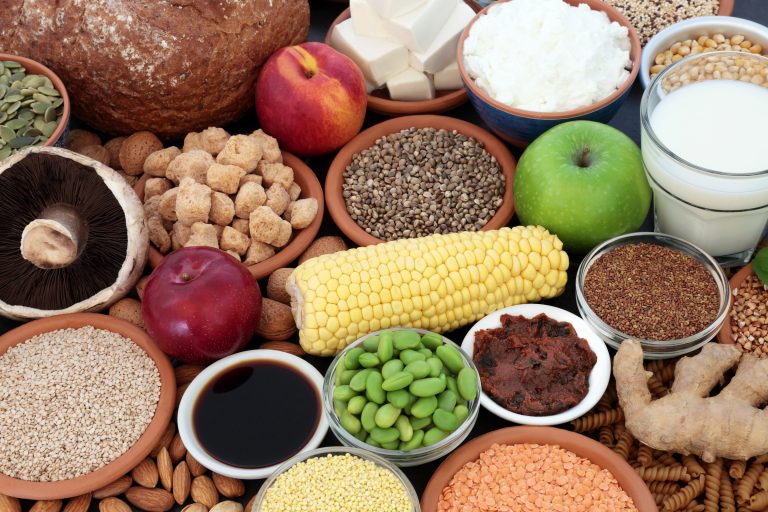Your New Year’s resolution to eat healthier doesn’t mean an insufferable diet that leaves you unsatisfied and scarfing down doughnuts for dinner within a week. By swapping out the diet-wrecking ingredients with more nutritious substitutions, you can dig in to your favorite recipes guilt-free. Simply follow our lead and make your must-eat everyday meals healthier with these easy substitutions.
Let’s bake — for your health
Baked goods — from savory breads to sweet treats like cupcakes and cookies — can be made healthier by simply swapping a few key ingredients.
The swap: Whole wheat flour for at least half of the all-purpose flour. Whole wheat flour is minimally processed and delivers more fiber and phytonutrients than all-purpose flour. Worried that your baked goods will end up dense or taste “healthy”? Opt for white whole wheat flour (try King Arthur Flour), which has a milder flavor, and swap it for just half the all-purpose flour. You can also look for recipes that are made specifically with whole wheat flour.
MORE: The history of New Year‘s Day is as rich as the food you will eat while you celebrate
The swap: Avocado for the butter. Avocado is mild in flavor yet rich in heart-healthy omega-3 fats, vitamins and minerals. This power food can mimic the functional properties of butter in many baked goods (don’t mind the green hue), keeping them moist and tender. Use a 1:1 ratio (for example, 1 cup avocado for 1 cup butter).
The swap: Low-fat fruit puree for butter or oil. If your goal is to cut the fat from your diet, substitute an equal amount of unsweetened applesauce or pumpkin puree for the fat called for in a recipe.
Go for the whole grains
The swap: Whole grain foods for processed white foods. When you’re choosing grain-based foods, opt for the whole grain varieties. Whole grains will give your diet a tasty boost in nutrition. Use whole wheat pasta instead of white pasta. Choose seeded whole grain breads instead of white. Cook brown rice, quinoa, farro, or barley instead of white rice. Read labels while shopping, and buy cereals, nutrition bars and other snacks that have the most fiber.
Be daring with your dairy
If dairy is one of your favorite food groups, you can strategically use dairy foods to make your favorite recipes better for you. Dairy goods, such as milk, yogurt and cheese, are good sources of protein, calcium, vitamin D and other vitamins and minerals.
The swap: Low-fat milk for whole milk. Though milk is a healthy drink, low-fat milk has less fat and fewer calories. Low-fat milk can be successfully swapped in for whole milk in most recipes.
MORE: Why do we eat ham, black-eyed peas and spinach on New Year’s Day?
The swap: Greek yogurt for regular yogurt or sour cream. Greek yogurt is a powerhouse of protein and probiotics. While regular plain yogurt is a healthy choice, plain Greek yogurt trumps it with significantly more protein, fewer carbohydrates and less sugar. Greek yogurt is an excellent substitution for sour cream because it offers a thick, creamy texture and tang, as well as a dose of probiotics, protein and far less saturated fat.
The swap: Low-fat cheese for full-fat cheese. Life is hard without cheese, so swap in low-fat varieties of cheese for regular cheese. Low-fat cream cheese, cottage cheese and hard cheeses are satisfying while also helping you cut fat and calories from your diet.
Toss a power salad
Drop the boring iceberg salads draped with processed bottled dressings and start dining on vibrant, nutrient-dense salads and side dishes made with healthy vegetables and greens.
The swap: Dark leafy greens for iceberg. Iceberg and romaine lettuce may be crisp, refreshing and low in calories, but they have minimal nutritional value. Swap in dark leafy greens — baby kale, baby chard, spinach, watercress and arugula — to give your salads more phytonutrients, flavor and color. Not ready to be a dark leafy greens convert? Start by substituting them for half the lettuce in your regular salads.
The swap: Healthier dressings for processed dressings. Many bottled dressings are full of saturated fat, calories and ingredients you can’t pronounce. Swap in a simple but flavorful homemade vinaigrette made with extra virgin olive oil, balsamic or apple cider vinegar, honey and a little salt and pepper. When shopping, choose dressings and vinaigrettes that are made with real food ingredients and not a list of additives and preservatives.
Cook smarter
Simple swaps in your everyday cooking can make your meals healthier without sacrificing taste.
The swap: Olive, avocado or coconut oil for butter. Butter certainly adds a luscious flavor to foods, but it also adds a lot of saturated fat. When your recipes, such as sautéed foods, call for melted butter, swap out half or all of it for healthier fats, such as olive, avocado or coconut oils. These oils can also be rubbed or drizzled over meats, poultry and fish recipes that call for butter.
The swap: Ground turkey for ground beef. Ground turkey is a lean meat alternative — fewer calories and saturated fat — that can be seamlessly swapped in for ground beef. Whether you’re stirring up a meat sauce for pasta or making meatballs or hamburgers, you can use ground turkey for part or all of the ground beef.









